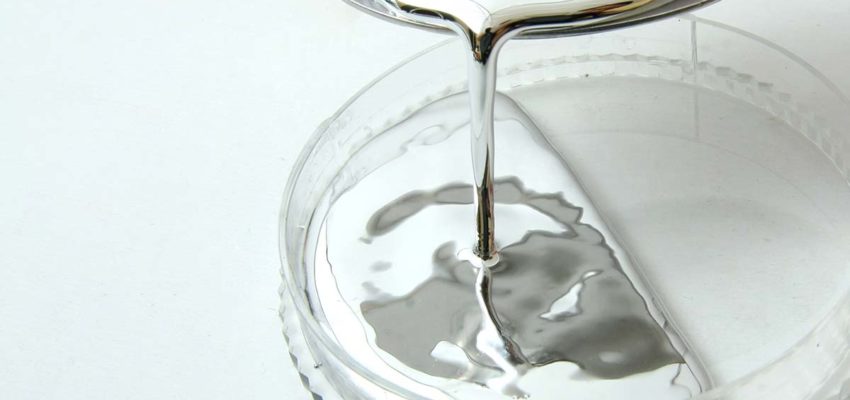Swedish Government Bans Amalgam Dental Fillings

On 18 February 1994 the government of Sweden publicly announced the final timetable for the ban on the use of mercury/silver amalgam as a dental filling material. The use of amalgam will be totally banned for children and adolescents up to the age of 19 by 1 July 1995 at the latest and for adults by 1997.
Although the ban is not in immediate effect, it is widely believed that few people in Sweden will believe that dental amalgam fillings are harmless in 1994 but will be harmful in 1995 or 1997. Several countries (the Swedish equivalent of states in the USA) have already stopped the use of amalgam in the child/adolescent group and one country has also banned its use in adults.
The Chemical Inspection Agency and the Health and Welfare Board will supervise the discontinuation of the use of amalgam. The government will also implement measures to increase the knowledge of alternative measures and techniques both in the basic education and additional education of dental personnel.
The announcement by the Swedish government culminates a series of moves over the past several years. On 20 May 1987, the Swedish Social Welfare and Health Administration (Socialstytrelsen) announced the conclusions of an expert commission they had appointed in December of 1985 for the purpose of evaluating the controversy over the use of dental amalgam. The announcement was: “Amalgam is, from a toxicological point of view, an unacceptable dental filling material which shall be discontinued when a suitable dental filling material has been developed. As a first step in the process to eliminate the use of amalgam in dental fillings, comprehensive amalgam work on pregnant women shall be stopped in order to prevent mercury damage to the fetus”.
The Socialstyrelsen division chief who issued the pronouncement also stated: “We realise now that we have previously made an error in our judgement of this question. Patients have suffered unnecessarily and we will now rectify our mistakes and in different ways try to solve the problem. It means no less than to give patients the best possible treatment. “It was also estimated that it would take ten years to totally institute the ban and a caution was issued against the use of amalgam in children and pregnant females.
At this point, the Swedish dental establishment exerted their considerable influence on the government. The government advisory against the use of amalgam in children and pregnant women did not result in a formal ban on that usage. On 24 January 1990 Hans Sundberg, the Chief Dental Officer of the Socialstyrelsen, proclaimed: “There is no proposal whatsoever to forbid the use of amalgam in Sweden as from the current year”.
Before long, because of continued opposition from the Parliament and the Swedish public, the influence of the Swedish dental establishment had waned. They had, however, managed to convince the government to ban the use of amalgam for environmental concerns, rather than concerns over patient health, in spite of the conclusions of the Socialstyrelsen expert committee.
On 1 March 1990, the Government instructed the Swedish National Chemicals Inspectorate (Keml) and the Swedish Environmental Protection Board to develop a proposal for limiting the use of particularly hazardous materials, including the mercury-containing dental amalgam. Then on 28 August 1992, the Socialstyrelsen issued a press release announcing that the “discontinuation of amalgam for environmental reasons should proceed step wise”, based on patient age groups.
Continued pressure from the Swedish Parliament, by now including support from all political parties, and the public has finally obliged the government to act on behalf of the health of patients, not for only environmental concerns. The government announcement was preceded by dramatic public reversal by the Swedish Dental Association (SDA) on 17 January 1994.
Because of growing opposition to the use of amalgam within ranks of dentistry, the SDA held a special meeting on the amalgam controversy on 18 December 1993. As a result of this meeting, the SDA announced a total reversal of their defence of the safety and use of dental amalgam, acknowledging that their leadership had previously been wrong on the subject. The Chairman of the SDA Committee for Methodological and Quality Issues acknowledged that the public reversal and admission was a severe lesson to the official leadership of Swedish dentistry.
Although a great many people contributed to the effort, the dramatic victory in Sweden is due in great part to the efforts of Dr. Mats Hanson (head of the Swedish organisation of amalgam victims) and Elizabet Carlsson. The world owes a great debt of gratitude to these dedicated and determined individuals.
Germany
The events that have occurred in Sweden are no less dramatic than those that have occurred in less dramatic than those that have occurred in Germany. In 1987, the Federal Department of Health (BGA) of the German government issued an advisory warning against the use of dental amalgam in pregnant women. On 2 February 1992, following an extraordinary Congress on dental amalgam sponsored by the International Academy of Oral Medicine and Toxicology (IAOMT), the BGA issued a document further restricting the use of amalgam, including the high-copper, non-gamma2-amalgam.
Then on 21 December 1993, Degussa AG, Germany’s largest producer of dental amalgam announced that it would no longer provide the product. This was followed shortly thereafter, on 25 January 1994, by the public announcement of a research study conducted at the Institute of Forensic Medicine of the University of Munich by Professor Dr. Gustav Drasch. The study measured the mercury content of the kidneys, liver and brain tissue of deceased foetuses, newborn and young children. The mercury levels in the deceased foetuses, babies and children correlated directly to the amount of dental amalgams in the teeth of the mothers. These results clearly demonstrated that the mercury from the dental amalgams of mothers is inherited by their offspring. It confirmed previous findings in animals reported by scientists at the University of Calgary, Canada. The German BGA immediately repeated their warning that pregnant women should avoid dental amalgam treatments.
In spite of these events, the leadership of the German Dental Association and the Federal Dental Board continue to maintain that mercury exposure from dental amalgam is harmless to patients and the material of choice for dental fillings.



